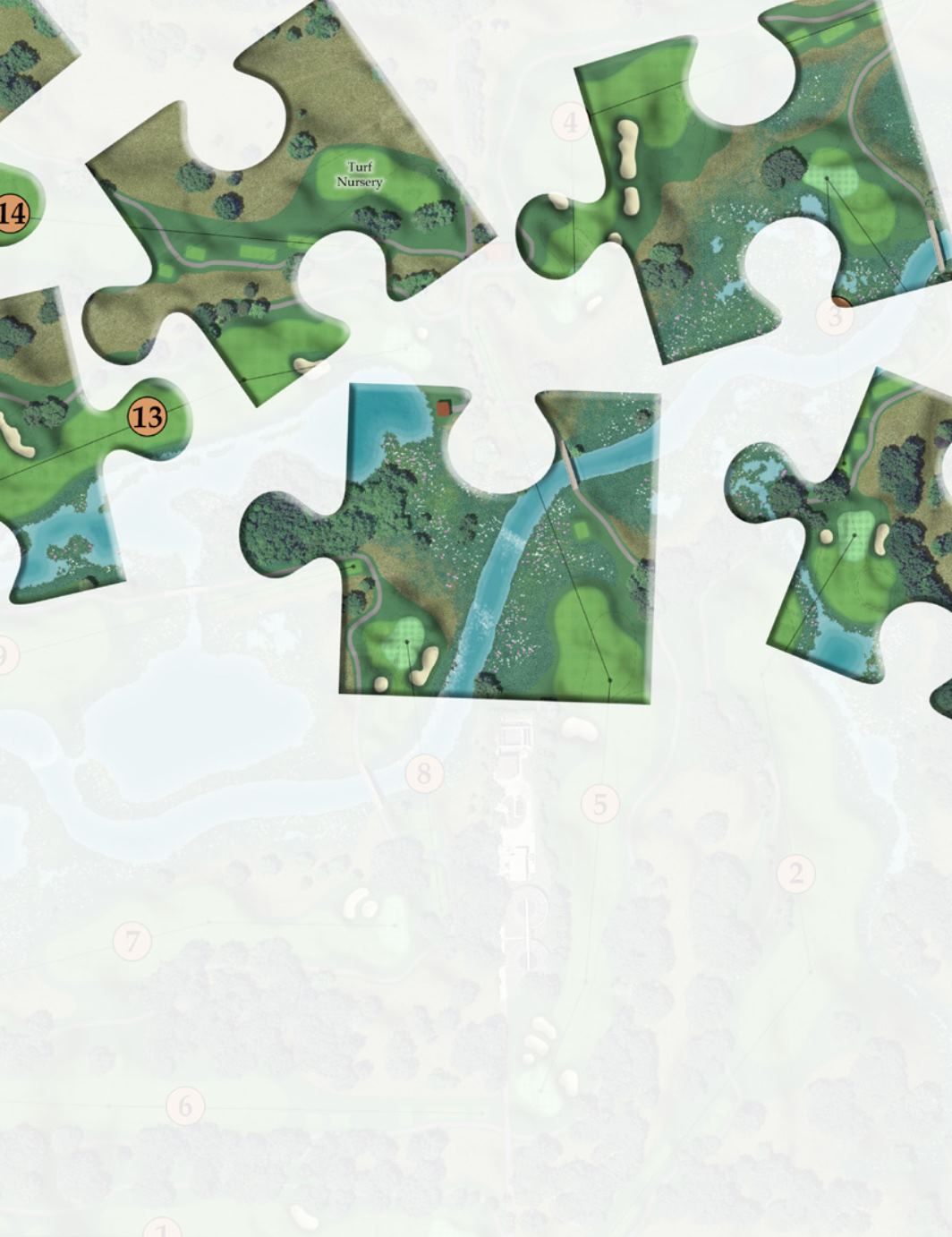

13
“If you were to drop someone
onto a property by helicopter—a
piece of land where they had never
been before—they would naturally
gravitate to powerful places. It might
be a bluff with a long vista. It could
be a convergence of environments
or maybe it’s an edge, like a forest,
lake or ocean. These are places where
we’re just naturally drawn.”
“You look for unique and dynamic
features that can be incorporated into
the routing and golfing experience,”
adds Art Schaupeter, ASGCA.
“Examples can range from the bold
and obvious like water shorelines to
the more subtle like interesting grade
breaks or slight high points of ground,
which can make for good green sites,
landing areas or teeing areas.”
“It’s mandatory to become intimately
familiar with a site,” says Smyers. “Not
just a topo map, but the land itself. It’s
the only way you can lead the golfer
on a journey that exposes dominant
landscape settings within the property
in a rhythmic, cohesive way. And
when a routing does that, whether the
golfer consciously realizes it or not, it
all feels right.”
Assembling the pieces
Once the golf course architect has
a complete picture of the site, its
features and constraints, the hard
work of solving the routing puzzle
really starts.
There are many pieces to consider.
“How do we access the site? Where
is the best spot for the clubhouse?
What about an entry road and
parking? A range—ideally playing
north—and practice area, first and
tenth tees and ninth and eighteenth
greens?” These are the critical
elements that Forrest tries to fit
together first. “Once we have those
elements in place,” he says, “we are
75 percent of the way there.”
“On more difficult sites, we may
have a tight corner that needs to be
considered first,” continues Forrest.
“There may only be room for a short
par four in and a par three out, and
it becomes a case of plugging key
holes in first and filling in the rest
from the clubhouse. And where the
constraints are so numerous, you
may need to be creative or concede
certain aspects of the design. For
example, have two par threes back to
back like at Cypress Point.”
“The actual routing process varies
from project to project,” adds Carrick.
“Sometimes a unique or spectacular
hole will be located first, followed by
the holes that connect in and out of
that particular location. Sometimes
it may be a sequence of interesting


















